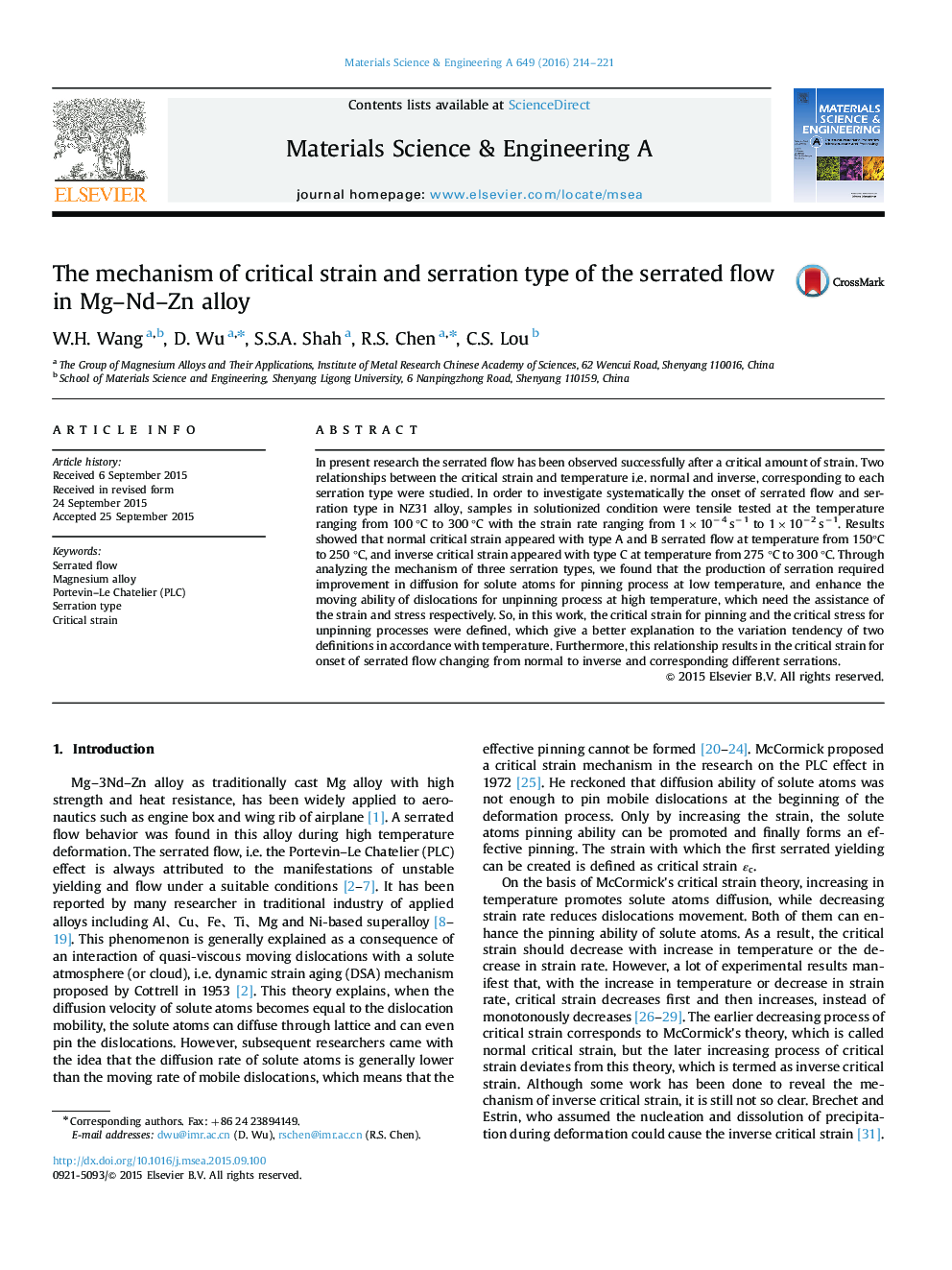| Article ID | Journal | Published Year | Pages | File Type |
|---|---|---|---|---|
| 7976512 | Materials Science and Engineering: A | 2016 | 8 Pages |
Abstract
In present research the serrated flow has been observed successfully after a critical amount of strain. Two relationships between the critical strain and temperature i.e. normal and inverse, corresponding to each serration type were studied. In order to investigate systematically the onset of serrated flow and serration type in NZ31 alloy, samples in solutionized condition were tensile tested at the temperature ranging from 100 °C to 300 °C with the strain rate ranging from 1Ã10â4 sâ1 to 1Ã10â2 sâ1. Results showed that normal critical strain appeared with type A and B serrated flow at temperature from 150°C to 250 °C, and inverse critical strain appeared with type C at temperature from 275 °C to 300 °C. Through analyzing the mechanism of three serration types, we found that the production of serration required improvement in diffusion for solute atoms for pinning process at low temperature, and enhance the moving ability of dislocations for unpinning process at high temperature, which need the assistance of the strain and stress respectively. So, in this work, the critical strain for pinning and the critical stress for unpinning processes were defined, which give a better explanation to the variation tendency of two definitions in accordance with temperature. Furthermore, this relationship results in the critical strain for onset of serrated flow changing from normal to inverse and corresponding different serrations.
Related Topics
Physical Sciences and Engineering
Materials Science
Materials Science (General)
Authors
W.H. Wang, D. Wu, S.S.A. Shah, R.S. Chen, C.S. Lou,
